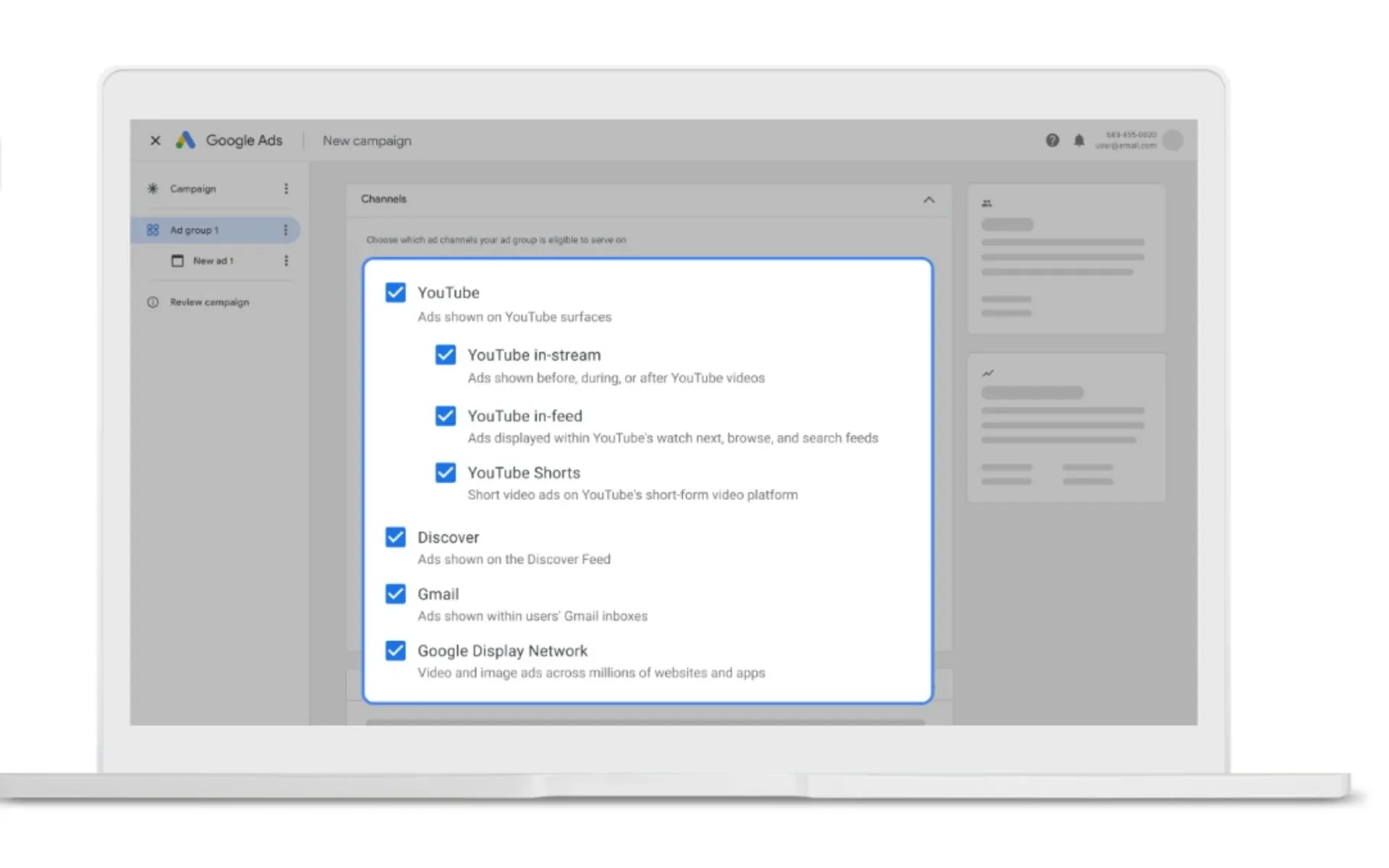Channel placement controls arrive for Google Demand Gen campaigns
Advertisers gain granular channel selection across YouTube, Discover, Gmail, and Display Network starting March 2025.

Google announced substantial enhancements to its Demand Gen advertising platform on January 30, 2025, marking a significant advancement in digital advertising capabilities. These modifications focus on providing advertisers with greater control and creative flexibility across multiple channels.
Channel control represents the cornerstone of this update. According to AdsLiaison, starting March 2025, advertisers gain precise control over ad placement across YouTube, Discover, and Gmail platforms. This enhancement extends to YouTube Shorts, allowing for targeted campaign deployment on specific segments of the video platform.
The platform expansion incorporates Google Display Network integration, connecting advertisers with potential customers across more than 3 million sites and applications. According to internal Google data, this network reaches over 90% of global internet users, substantially increasing potential audience engagement opportunities.
YouTube Placements maintain prominence within the system, offering three distinct advertising locations. The in-stream placement positions advertisements before, during, or after YouTube videos, capturing audience attention during natural content transitions. In-feed placements integrate advertisements within YouTube's watch next suggestions, browse sections, and search results, enabling discovery during user navigation. YouTube Shorts placement specifically targets the platform's short-form video format, adapting content for vertical viewing experiences.
Discover Feed integration marks a significant expansion beyond traditional video platforms. According to Google's documentation, this placement targets users actively exploring content aligned with their interests. On Android devices, users access this feed by swiping left from their home screen, while iPhone users find it within the iOS Google App.
Gmail placement capabilities extend advertising reach into users' email environments. This integration enables advertisements to appear within Gmail inboxes, presenting opportunities for engagement during regular email interactions. The placement maintains strict formatting requirements to ensure appropriate presentation within the email interface.
Google Display Network represents the broadest reach option, extending advertising presence across more than 3 million websites and applications. This network supports both video and image advertisements, enabling diverse content delivery across partnered platforms. Internal Google data indicates this network reaches over 90% of global internet users, providing extensive audience access.
Channel selection granularity enables precise campaign targeting. Advertisers can activate or deactivate specific channels independently, allowing for strategic budget allocation across different platforms. This control extends to the ad group level, enabling varied targeting strategies within single campaigns.
Format requirements adapt to each placement type. YouTube in-stream advertisements maintain traditional video specifications, while Shorts placements optimize for 9:16 aspect ratios. Display network placements support multiple creative formats, accommodating both video and static image content.
Performance tracking integrates across all placement options. New reporting columns provide channel-specific insights, enabling advertisers to measure effectiveness across different platforms. This data granularity supports informed decision-making for channel selection and budget optimization.
Creative capabilities see significant enhancement through multiple technical innovations. Late February 2025 marks the introduction of 9:16 vertical image advertisements specifically designed for Shorts format. This aspect ratio optimization addresses the growing prevalence of vertical video consumption patterns.
Video enhancement capabilities introduce automated tools for content modification. Advertisers can now generate condensed versions of existing video content while maintaining message integrity. The system supports automatic aspect ratio adjustments, streamlining content adaptation across different display formats.
For retail sector implementations, Google introduced specialized features through Google Merchant Center integration. This development enables direct product information display within advertisements, creating a more seamless shopping experience. Local inventory integration provides real-time product availability information, bridging online browsing with physical retail locations.
Performance measurement capabilities expand through new reporting columns in Google Ads. These additions include view-through conversion metrics, aligning measurement methodologies with social media advertising standards. The system now isolates Demand Gen campaign performance from other Google advertising initiatives, providing clearer performance insights.
The Nielsen analysis demonstrates significant performance improvements, with advertisers experiencing 58% higher Return on Ad Spend compared to previous campaign formats. This improvement stems from enhanced targeting capabilities and more precise audience engagement mechanisms.
This comprehensive update reflects Google's response to evolving digital advertising requirements, providing advertisers with more granular control over campaign deployment while expanding creative possibilities across multiple platforms and formats.

